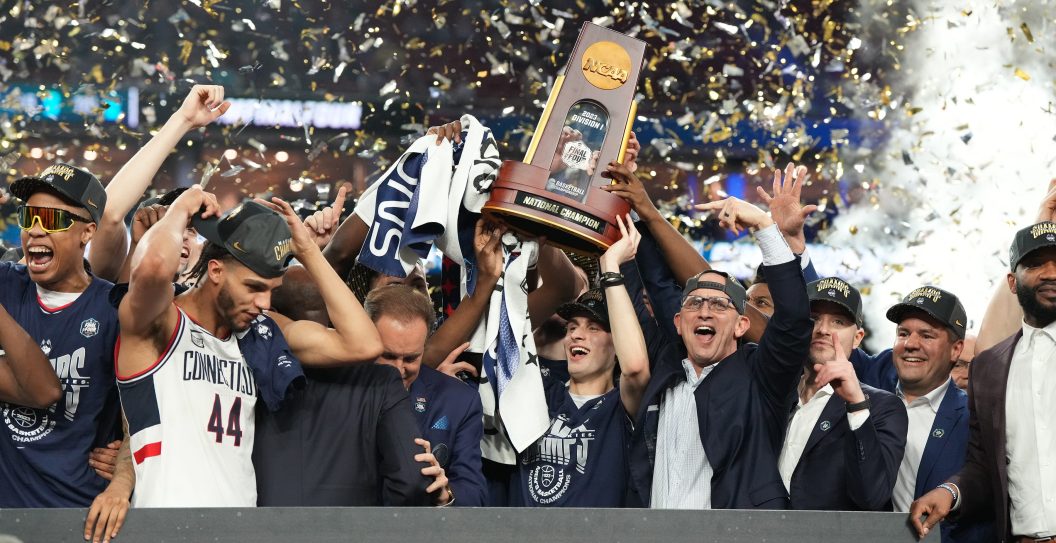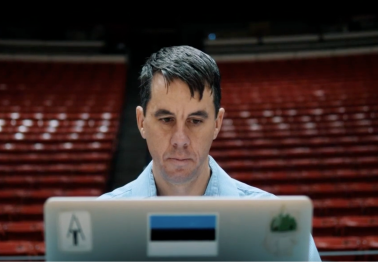Ken Pomeroy knew he'd made it big when a coach called him to complain.
"I originally had pace of play on my website," Pomeroy explained while speaking at the 2023 Basketball Analytics Summit, "but there are definitely contrasts in terms of how that pace comes about. The coach complained to me about just looking at pace. He said, 'You have us as playing a slow pace, but we actually play pretty fast. We're not running down the shot clock every time or anything like that.'"
After a discussion, the coach explained why he was so concerned.
"I'm trying to recruit here, and the kids are looking at our pace on your site and thinking we play a slow-down game," the coach said.
As has become his brand since 2004, when he started KenPom.com, the site that has become college basketball's analytics bible, Pomeroy looked into the data.
"Sure enough," Pomeroy said, "he was right. They did play at a fast pace. The defense was slowing him down."
Pomeroy responded by splitting the pace calculation into two components: Offensive pace and defensive pace.
The call was symbolic of what happened to Pomeroy in the first decade of the millennium as his site went from a lark that he started out of his own personal interest in basketball analytics, into what it is now—the go-to source for advanced metrics on the sport.
"I wasn't looking for a new line of work," he said of the site's early days. "It was just something I did."
Pomeroy was a meteorologist at the time.
"I was pretty happy doing that," he said. "This was just a hobby. I didn't have the vision to turn this into an occupation."
KenPom.com is a subscription site, and, as analytics became part of the sports establishment, Pomeroy came to a career crossroads.
"Eventually things got busy enough that I was basically working two jobs," he said. "I had to choose—basketball or meteorology. I chose basketball, because frankly, it was more lucrative. I could set my own hours. I had control over what work I did. And obviously, being able to do something I love doesn't make it seem like work. ... One of the concerns I had when I started was going from a hobby to a business, is it going to be as fun when have to take care of the things not related to basketball."
Sure enough, running KenPom.com full-time meant a lot of additional responsibilities. He had to learn how to keep a website up and running, how to bill customers, and field various ad hoc requests from teams and, yes, coaches.
"All that stuff is pretty boring," he admitted. "There's a lot of boring stuff involved. It's not the funnest part. Some days, I wake up and have 15 emails. Maybe two of them are interesting, and 13 are people needing mundane responses. Those are the days I'm like, 'Eh, this is not really what I want to be doing.' But it's a small price to pay for having the rest of my day to do what I want."
What he wants is to offer insight into the sport he has helped revolutionize with his rankings and tempo-free stats. As the preseason comes to a close and the games are about to begin for real, Pomeroy is in his element.
"As an intellectual exercise, this is one of my favorite times of the year," he said. "Once the season starts all the ratings converge into one, because we're all using the same data. But in preseason, ratings can use a lot of different methodologies, and we're all trying to come up with the most accurate rating. It's a really fun challenge."
Of course, last season saw one of the biggest misses in the history of ranking teams prior to the season, when North Carolina was ranked No. 1 in the preseason AP poll, then suffered through an up and down year that had the Tar Heels miss the NCAA Tournament.
"I think North Carolina was ninth in my rankings," Pomeroy pointed out. "If you look at the mathematical ratings out there, I don't think anybody had Carolina No. 1. It was kind of a runaway snowball situation in the offseason. It went from everybody thinking they were top 10 to everybody agreeing they'd be No. 1. It was kind of odd. You saw what could happen—the worst case scenario played out for them."
While Pomeroy didn't have Carolina at No. 1, that doesn't mean his ratings were perfect.
"UConn won it all," he said. "They were around 25 in my preseason ratings. FAU had a Final Four run. They were in the 90s. That stuff happens. It's just a testament to the sport. Preseason ratings are an estimate of what we think you'll do based on the history of all the teams that looked like you. But the error bars associated with them are pretty large. If we set reasonable error bars for the top team, I think half the time the finish outside the top five and maybe worse, outside the top seven or eight."
Pomeroy doesn't worry that much about having a bad prediction in his preseason ratings.
"Fans might get a little to offended by them sometimes," he said. "But that's just fans being fans. I haven't heard complaints from coaches. In my own experience, when coaches disagree, I can have a mature conversation with them. But a lot of them don't pay attention to my ratings. When I talk to them, they don't even know where they're ranked."
What bothers him more is when his site has incorrect data, or isn't available.
"I definitely feel more responsible," he said. "That's one of the drawbacks of doing this as a job. When it was a hobby it was like, 'Hey, all this is for fun. If there's bad data on the site, who cares?' I remember one summer, the site was down for three days, and I didn't even know it. This was obviously pre-twitter. Now, that would be unacceptable. The most important thing is that the site works and is functional."
As for using the data on his site, Pomeroy points out that, while analytics are a valuable tool, it's not an either-or situation when it comes to relying on the metrics or on human observations.
"Analytics lets you automate things," he said. "What can analytics do that a human can't do? It can see every game. It can see every play. That's where it can aid humans. Humans have an advantage that they can see aspects of a player that aren't quantifiable right now and may not be for decades—Really subtle stuff that scouts have been trained to see. It's a complementary role. Analytics can see everything, but humans can see the details."
It's just the latest lesson from the man who taught the college basketball universe advanced mathematics.

